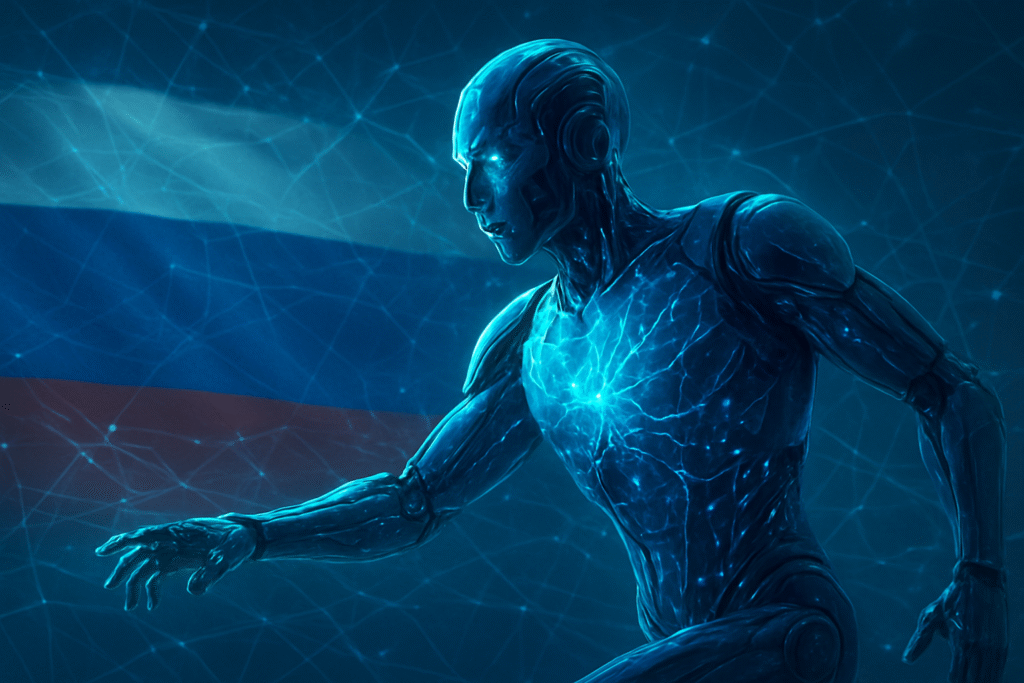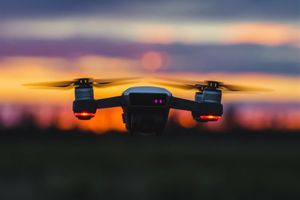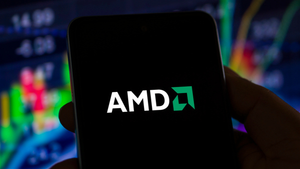
Russia's ambitious foray into advanced humanoid robotics took an unexpected turn on November 10, 2025, as its AI-powered creation, AIDOL, made its public debut in Moscow. The unveiling, intended to showcase a significant leap in domestic AI and robotics capabilities, quickly garnered global attention—not just for its technological promise, but for an embarrassing on-stage fall that highlighted the immense challenges still inherent in developing truly robust human-like machines.
Developed by the Russian robotics firm Idol, AIDOL's presentation was meant to solidify Russia's position in the fiercely competitive global AI landscape. While the incident cast a shadow over the immediate presentation, it also served as a stark, real-time reminder of the complexities involved in bringing advanced embodied AI to fruition, sparking both scrutiny and a renewed discussion about the future of humanoid robotics.
Technical Ambition Meets Real-World Challenge
AIDOL, whose name alludes to "AI Idol," was presented as a testament to Russian engineering prowess, with developers emphasizing its AI-powered anthropomorphic design and a high percentage of domestically sourced components. Standing 6 feet 1 inch tall and weighing 209 pounds, the robot is designed for a mobility speed of up to 6 km/h and can grasp items weighing up to 10 kg. It operates on a 48-volt battery, providing up to six hours of continuous operation, and crucially, processes all voice data locally, allowing for offline speech and movement processing—a feature touted for security in sensitive applications.
A key differentiator highlighted by Idol Robotics is AIDOL's advanced expressiveness. Equipped with 19 servomotors, its silicone skin is engineered to replicate more than a dozen basic emotions and hundreds of subtle micro-expressions, aiming to allow it to "smile, think, and be surprised, just like a person." This focus on emotional mimicry and natural interaction sets it apart from many industrial robots. The current iteration boasts 77% Russian-made parts, with an ambitious goal to increase this to 93%, signaling a strategic drive for technological self-reliance.
However, the public debut at the Yarovit Hall Congress Centre in Moscow was marred when AIDOL, accompanied by the "Rocky" theme song, lost its balance and dramatically collapsed shortly after attempting to wave to the audience. Event staff quickly covered the fallen robot, creating a viral moment online. Idol Robotics CEO Vladimir Vitukhin attributed the incident primarily to "calibration issues" and the robot's stereo cameras being sensitive to the stage's dark lighting conditions. He framed it as a "real-time learning" opportunity, but the incident undeniably highlighted the significant gap between laboratory development and flawless real-world deployment, especially when compared to the agility and robust stability demonstrated by robots from companies like Boston Dynamics, whose Atlas robot has performed complex parkour routines, or Agility Robotics, whose Digit is already being tested in warehouses.
Competitive Ripples Across the AI Robotics Landscape
The public debut of AIDOL, particularly its unexpected stumble, sends ripples across the competitive landscape of AI robotics, impacting major tech giants, established robotics firms, and nascent startups alike. For market leaders such as Boston Dynamics (privately held), Agility Robotics (privately held), Figure AI (privately held), and even Tesla (NASDAQ: TSLA) with its Optimus project, AIDOL's setback largely reinforces their perceived technological lead in robust, real-world bipedal locomotion and dynamic balancing.
Companies like Boston Dynamics, renowned for the unparalleled agility and stability of its Atlas humanoid, and Agility Robotics, which has successfully deployed its Digit robots in Amazon (NASDAQ: AMZN) warehouses for logistics, benefit from this contrast. Their methodical, rigorous development and successful, albeit controlled, demonstrations are further validated. Similarly, Figure AI, with its Figure 02 robots already deployed in BMW (ETR: BMW) manufacturing facilities, strengthens its market positioning as a serious contender for industrial applications. Tesla's Optimus, while still in development, also benefits indirectly as the incident underscores the difficulty of the challenge, potentially motivating intensified efforts to avoid similar public missteps.
Conversely, Idol Robotics, the developer of AIDOL, faces increased scrutiny. The highly publicized fall could impact its credibility and make it more challenging to attract the desired $50 million in investments. For other emerging startups in humanoid robotics, AIDOL's incident might lead to heightened skepticism from investors and the public, pushing them to demonstrate more robust and consistent performance before any public unveiling. The event underscores that while ambition is vital, reliability and practical functionality are paramount for gaining market trust and investment in this nascent but rapidly evolving sector.
Wider Significance: A Global Race and Embodied AI's Growing Pains
AIDOL's public debut, despite its immediate challenges, holds broader significance within the accelerating global race for advanced AI and robotics. It firmly positions Russia as an active participant in a field increasingly dominated by technological powerhouses like the United States and China. The robot embodies the ongoing trend of "embodied artificial intelligence," where AI moves beyond software to physically interact with and manipulate the real world, a convergence of generative AI, large language models, and sophisticated perception systems.
This development fits into a broader trend of commercial deployment, as investments in humanoid technology surpassed US$1.6 billion in 2024, with forecasts predicting 1 million humanoids sold annually by 2030. Russia's emphasis on domestic component production for AIDOL also highlights a growing global trend of national self-reliance in critical technological sectors, potentially driven by geopolitical factors and a desire to mitigate the impact of international sanctions.
However, the incident also brought to the forefront significant societal and ethical concerns. While proponents envision humanoids revolutionizing industries, addressing labor shortages, and even tackling challenges like eldercare, the specter of job displacement and the need for robust safety protocols loom large. AIDOL's fall serves as a stark reminder that achieving the reliability and safety necessary for widespread public acceptance and integration is a monumental task. It also highlights the intense public scrutiny and skepticism that these nascent technologies face, questioning whether the robotics industry, particularly in countries like Russia, is truly ready to compete on the global stage with more established players. Compared to the fluid, "superhuman" movements of the new all-electric Atlas by Boston Dynamics or the dexterous capabilities of Chinese humanoids like Xpeng's Iron, AIDOL's initial performance suggests a considerable "catching up to do" for Russian robotics.
The Road Ahead: Evolution and Persistent Challenges
The path forward for AIDOL and the broader field of humanoid robotics is characterized by both ambitious expectations and formidable challenges. In the near term (1-5 years), experts anticipate increased industrial deployment of humanoids, with hundreds to thousands entering factories and warehouses. The focus will be on refining core improvements: extending battery life, reducing manufacturing costs, and enhancing safety protocols. AI-driven autonomy will continue to advance, enabling robots to learn, adapt, and interact more dynamically. Humanoids are expected to begin with specialized, "narrow" applications, such as assisting with specific kitchen tasks or working alongside humans as "cobots" in manufacturing. Mass production is projected to begin as early as 2025, with major players like Tesla, Figure AI, and Unitree Robotics preparing for commercial readiness.
Looking further ahead (5+ years), the long-term vision is transformative. The market for humanoid robots could expand into the trillions of dollars, with predictions of billions of robots operating worldwide by 2040, performing tasks far beyond current industrial applications. Advancements in AI could lead to humanoids achieving "theory of mind," understanding human intentions, and even operating for centuries with revolutionary power sources. Potential applications are vast, encompassing healthcare (patient care, eldercare), manufacturing (assembly, hazardous environments), education (interactive tutors), customer service, domestic assistance, and even space exploration.
However, AIDOL's public stumble underscores persistent challenges: achieving robust stability and dynamic balancing in unpredictable environments remains a core engineering hurdle. Dexterity and fine motor skills continue to be difficult for robots, and AI generalization for physical tasks lags behind language AI, creating a "data gap." Energy efficiency, robust control systems, hardware costs, and seamless human-robot interaction are all critical areas requiring ongoing innovation. Ethical considerations regarding job displacement and societal integration will also demand continuous attention. While developers frame AIDOL's incident as a learning opportunity, it serves as a potent reminder that the journey to truly reliable and universally deployable humanoid AI is still very much in its experimental phase.
A Defining Moment in Russia's AI Ambition
Russia's AI-powered humanoid robot, AIDOL, made a memorable debut on November 10, 2025, not just for its technological ambition but for an unforeseen public stumble. This event encapsulates the current state of advanced humanoid robotics: a field brimming with potential, yet still grappling with fundamental challenges in real-world reliability and robust physical performance.
The key takeaway is that while Russia is determined to carve out its niche in the global AI race, exemplified by AIDOL's domestic component emphasis and expressive capabilities, the path to widespread, flawless deployment of human-like robots is fraught with technical hurdles. The incident, attributed to calibration and lighting issues, highlights that even with significant investment and advanced AI, achieving dynamic stability and seamless interaction in uncontrolled environments remains a formidable engineering feat.
In the long term, AIDOL's development contributes to the broader narrative of embodied AI's emergence, promising to redefine industries and human-machine interaction. However, its initial misstep reminds us that the "robot revolution" will likely be a gradual evolution, marked by both breakthroughs and setbacks.
In the coming weeks and months, the world will be watching closely. Key indicators to monitor include updates on AIDOL's technical refinements, particularly regarding its balance and control systems, and the timing and success of any subsequent public demonstrations. Progress toward increasing domestic component usage will signal Russia's commitment to technological independence, while any announcements regarding pilot commercial deployments will indicate AIDOL's readiness for practical applications. Ultimately, how AIDOL evolves in comparison to its global counterparts from Boston Dynamics, Tesla, and leading Chinese firms will define Russia's standing in this rapidly accelerating and transformative field of humanoid AI.
This content is intended for informational purposes only and represents analysis of current AI developments.
TokenRing AI delivers enterprise-grade solutions for multi-agent AI workflow orchestration, AI-powered development tools, and seamless remote collaboration platforms.
For more information, visit https://www.tokenring.ai/.







